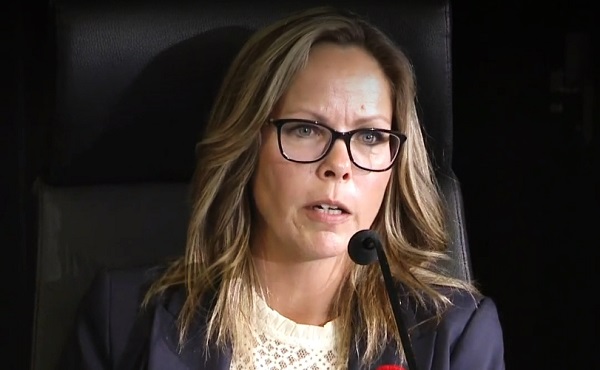Fraser Institute
Carney government’s housing plan poses major risks to taxpayers

From the Fraser Institute
By Jake Fuss and Austin Thompson
A trade war, Trump’s threats to Canada’s sovereignty, and global economic volatility loomed large in the recent federal election. Yet many voters remained focused on an issue much closer to home: housing affordability.
In 2023, under Justin Trudeau, Canada added a record high 1.2 million new residents—more than double the previous record in 2019—and another 951,000 new residents last year. All told, Canada’s population has grown by about 3 million people since 2022—roughly matching the total population increase during the entire decade of the 1990s. Not surprisingly, homebuilding has failed to keep pace. In fact, housing construction rates have barely exceeded 1970s levels, even though the population has more than tripled since then. The result—a historic surge in housing costs.
On the campaign trail, the Liberals set an immigration target of about 400,000 per year, which is lower than the recent record highs but still high by historical standards, and tabled a plan they claim will double Canada’s residential construction rate to 500,000 new homes per year within a decade. But is it a good plan? And can the Liberals deliver it?
First, the good news. To help boost private homebuilding, the Carney government promised to introduce tax incentives including a rental building allowance, which would help reduce the tax bill on new multi-unit rental buildings, and a GST exemption for some first-time homebuyers, which may reduce the cost of newly-built homes and spur more homebuilding. The government also plans to expand the “Housing Accelerator Fund,” which offers federal dollars to municipalities in exchange for more flexible municipal building rules, and modernize the federal building code, which could shorten construction timelines. While much will depend on execution, these policies rightly aim to make it faster, cheaper and more attractive for the private sector to build homes.
Now, the bad news. The Carney government plans to create a new federal entity called Build Canada Homes (BCH) to “get the government back in the business of building.” According to Carney’s vision, the BCH will act “as a developer to build affordable housing” and provide more than “$25 billion in financing” to homebuilders and “$10 billion in low-cost financing and capital” for homebuilders to build “affordable” homes.
We’ve seen a similar movie before. In 2017, the Trudeau government created the Canada Infrastructure Bank (CIB) to invest in the “next generation of infrastructure Canadians need.” Since then, the CIB has approved approximately $13.2 billion in investments across 76 projects (as of July 2024), yet only two CIB-funded projects had been completed, prompting the authors of a multi-party House of Commons committee report to recommend abolishing the CIB.
The bureaucrats who will run the BCH won’t have the private sector’s expertise in housing development, nor the same incentives to keep costs down. BCH’s mandate is already muddled by competing goals—it must deliver “affordable” homes while simultaneously prioritizing certain building materials (e.g. Canadian softwood lumber), which could increase building costs.
The plan for BCH’s multi-billion-dollar loan portfolio includes significant “low cost” (that is, taxpayer subsidized) financing, a huge bet on prefabricated homebuilding, and no certainty about who will be on the hook for any failed projects—combined, this represents a major increase in costs and risks for taxpayers at a time when they already shoulder rising federal deficits and debt.
There’s also a real risk that BCH will simply divert limited investment dollars and construction resources away from private homebuilding—where projects respond to the needs of Canadian homebuyers and renters—and toward government-backed housing projects shaped by political goals. Instead of boosting overall homebuilding, BCH may simply reshuffle limited resources. And, as noted by the government, there’s a severe shortage of skilled construction labour in Canada.
It’s hard to see how Carney’s housing plan would double the pace of homebuilding in Canada—a very ambitious target that would require not only prudent housing policies but greater domestic savings, an implausibly large expansion in the construction workforce (which grew by only 18.4 per cent over the last decade), and the political fortitude to endure vocal opposition to housing development in certain neighbourhoods and on public lands.
Canada’s housing crisis will benefit from federal leadership—but not federal overreach. Rather than overpromising what it can’t deliver, the Carney government should refocus on what it’s best positioned to do: reform incentives, streamline regulations, and nudge municipalities and provinces to remove constraints on homebuilding. Trying to also act as a housing developer and lender is a far riskier approach.
Business
Here’s what pundits and analysts get wrong about the Carney government’s first budget

From the Fraser Institute
By Jason Clemens and Jake Fuss
Under the new budget plan, this wedge between what the government collects in revenues versus what is actually spent on programs will rise to 13.0 per cent by 2029/30. Put differently, slightly more than one in every eight dollars sent to Ottawa will be used to pay interest on debt for past spending.
The Carney government’s much-anticipated first budget landed on Nov. 4. There’s been much discussion by pundits and analysts on the increase in the deficit and borrowing, the emphasis on infrastructure spending (broadly defined), and the continued activist approach of Ottawa. There are, however, several critically important aspects of the budget that are consistently being misstated or misinterpreted, which makes it harder for average Canadians to fully appreciate the consequences and costs of the budget.
One issue in need of greater clarity is the cost of Canada’s indebtedness. Like regular Canadians and businesses, the government must pay interest on federal debt. According to the budget plan, total federal debt will reach an expected $2.9 trillion in 2029/30. For reference, total federal debt stood at $1.0 trillion when the Trudeau government took office in 2015. The interest costs on that debt will rise from $53.4 billion last year to an expected $76.1 billion by 2029/30. Several analyses have noted this means federal interest costs will rise from 1.7 per cent of GDP to 2.1 per cent.
These are all worrying statistics about the indebtedness of the federal government. However, they ignore a key statistic—interest costs as a share of revenues. When the Trudeau government took office, interest costs consumed 7.5 per cent of revenues. This means taxpayers were foregoing 7.5 per cent of the resources they sent to Ottawa (in terms of spending on actual programs) because these monies were used to pay interest on debt accumulated from previous spending.
Under the new budget plan, this wedge between what the government collects in revenues versus what is actually spent on programs will rise to 13.0 per cent by 2029/30. Put differently, slightly more than one in every eight dollars sent to Ottawa will be used to pay interest on debt for past spending. This is one way governments get into financial problems, even crises, by continually increasing the share of revenues consumed by interest payments.
A second and fairly consistently misrepresented aspect of the budget pertains to large spending initiatives such as Build Canada Homes and Build Communities Strong Fund. The former is meant to increase the number of new homes, particularly affordable homes, being built annually and the latter is intended to provide funding to provincial governments (and through them, municipalities) for infrastructure spending. But few analysts question whether or not these programs will produce actual new spending for homebuilding or simply replace or “crowd-out” existing spending by the private sector.
Let’s first explore the homebuilding initiative. At any point in time, there are a limited number of skilled workers, raw materials, land, etc. available for homebuilding. When the federal government, or any government, initiates its own homebuilding program, it directly competes with private companies for that skilled labour (carpenters, electricians, etc.), raw materials (timber, concrete, etc.) and the land needed for development. Put simply, government homebuilding crowds out private-sector activity.
Moreover, there’s a strong argument that the crowding out by government results in less homebuilding than would otherwise be the case, because the incentives for private-sector homebuilding are dramatically different than government incentives. For example, private firms risk their own wealth and wellbeing (and the wellbeing of their employees) so they have very strong incentives to deliver homes demanded by people on time and at a reasonable price. Government bureaucrats and politicians, on the other hand, face no such incentives. They pay no price, in terms of personal wealth or wellbeing if homes, are late, not what consumers demand, or even produce less than expected. Put simply, homebuilding by Ottawa could easily result in less homes being built than if government had stayed out of the way of entrepreneurs, businessowners and developers.
Similarly, it’s debatable that infrastructure spending by Ottawa—specifically, providing funds to the provinces and municipalities—results in an actual increase in total infrastructure spending. There are numerous historical examples, including reports by the auditor general, detailing how similar infrastructure spending initiatives by the federal government were plagued by mismanagement. And in many circumstances, the provinces simply reduced their own infrastructure spending to save money, such that the actual incremental increase in overall infrastructure spending was negligible.
In reality, some of the major and large spending initiatives announced or expanded in the Carney government’s first budget, which will accelerate the deterioration of federal finances, may not deliver anything close to what the government suggests. Canadians should understand the real risks and challenges in these federal spending initiatives, along with the debt being accumulated, and the limited potential benefits.
Business
Carney budget continues misguided ‘Build Canada Homes’ approach

From the Fraser Institute
By Jake Fuss and Austin Thompson
The Carney government’s first budget tabled on Tuesday promises to “supercharge” homebuilding across the country. But Ottawa’s flagship housing initiative—a new federal agency, Build Canada Homes (BCH)—risks “supercharging” federal debt instead while doing little to boost construction.
The budget accurately diagnoses the root cause of Canada’s housing shortage—costly red tape on housing projects, sky-high taxes on homebuilders, and weak productivity growth in the construction sector. But the proposed cure, BCH, does nothing to fix these problems despite receiving a five-year budget of $13 billion.
BCH’s core mandate is to build and finance affordable housing projects. But this mission is muddled by competing political priorities to preference Canadian building materials and prioritize “sustainable” construction materials. Any product that needs a government preference to be used is clearly not the most cost-effective option. The result—BCH’s “affordable” homes will cost more than they needed to, meaning more tax dollars wasted.
Ottawa claims BCH will improve construction productivity by “generating demand” (read: splashing out tax dollars) for factory-built housing. This logic is faulty—where factory-built housing is a cost-effective and desirable option, private developers are already building it. “Prioritizing” factory-built homes amounts to Ottawa trying to pick winners and losers—a strategy that reliably wastes taxpayer dollars. The civil servants running BCH lack the market knowledge and cost-cutting incentives of private homebuilders, who are far better positioned to identify which technologies will deliver the affordable homes Canadians need.
The government also insists BCH projects will attract more private investment for housing. The opposite is more likely—BCH projects will compete with private developers for limited investment dollars and construction labour. Ottawa’s intrusion into housing development could ultimately mean fewer private-sector housing projects—those driven by the real needs of homebuyers and renters, not the Carney government’s political priorities.
Despite its huge budget and broad mandate, BCH still lacks clear goals. Its only commitment so far is to “build affordable housing at scale,” with no concrete targets for how many new homes or how affordable they’ll be. Without measurable outcomes, neither Ottawa nor taxpayers will know whether BCH delivers value for money.
You can’t solve Canada’s housing crisis with yet another federal program. Ottawa should resist the temptation to act as a housing developer and instead create fiscal and economic conditions that allow the private sector to build more homes.
-

 Censorship Industrial Complex2 days ago
Censorship Industrial Complex2 days agoHow the UK and Canada Are Leading the West’s Descent into Digital Authoritarianism
-

 Business2 days ago
Business2 days agoCapital Flight Signals No Confidence In Carney’s Agenda
-

 International2 days ago
International2 days agoThe capital of capitalism elects a socialist mayor
-

 Justice1 day ago
Justice1 day agoCarney government lets Supreme Court decision stand despite outrage over child porn ruling
-

 Business1 day ago
Business1 day agoCarney’s budget spares tax status of Canadian churches, pro-life groups after backlash
-

 COVID-191 day ago
COVID-191 day agoFreedom Convoy leader Tamara Lich to appeal her recent conviction
-

 Daily Caller1 day ago
Daily Caller1 day agoUS Eating Canada’s Lunch While Liberals Stall – Trump Admin Announces Record-Shattering Energy Report
-

 Business1 day ago
Business1 day agoThe Liberal budget is a massive FAILURE: Former Liberal Cabinet Member Dan McTeague













